Have you heard of the James Webb Space Telescope? It has incredible space exploration capabilities and has already accomplished a lot. If you’ve never heard of it, don’t worry. We are here for you. Without wasting any more time, let’s learn about JWST, what makes it unique and its upcoming missions.
The James Webb Space Telescope (JWST): An Introduction
The James Webb Space Telescope (JWST) is named after James E. Webb, a prominent figure at NASA who played a key role in lunar exploration missions. He was NASA’s boss from 1961 to 1968 and led the way for big achievements like the Apollo program, which put the first astronauts on the moon. His ideas and hard work inspire people even today.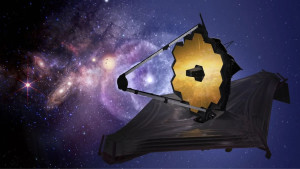
The James Webb Space Telescope is an important instrument for exploring the universe and is considered the successor to the Hubble Space Telescope. It was launched on December 25, 2021, after years of research and collaboration between NASA, the European Space Agency, and the Canadian Space Agency.
The James Webb Space Telescope (JWST) began its space adventure with some truly impressive accomplishments. This includes taking detailed images of distant galaxies, solar system’s moons, asteroids, and more. JWST looks far into space and by capturing information it explains how things in the universe work. In addition to exploring faw=r away space, the James Webb Space Telescope looked back home and explored our own solar system. And it’s not over yet! There’s more to discover, the James Webb Space Telescope promises to uncover more secrets of the universe as it continues its journey. But how can JWST perform these tasks? Let’s take a look at its features.
Uniqueness of the James Webb Space Telescope (JWST)
-
Innovative Design of the James Webb Space Telescope
The James Webb Space Telescope is a space telescope with some amazing features. Its primary mirror is approximately 20 feet long- not just a big mirror; it’s actually made up of 18 small hexagonal pieces. These parts are made of beryllium and coated with a thin layer of gold to increase reflectivity. Another attraction of the JWST is its giant umbrella, which is the size of a tennis court. It is made of Kapton, a tough material that can withstand the extreme conditions of space. It does a great job of blocking out unwanted light and keeping the telescope cool. Such an innovative design makes it a powerful tool for exploring the universe and uncovering its secrets.
-
Location and Orbit of the James Webb Space Telescope
JWST orbits the Sun, but not as closely as Earth does. Instead, it is stationed at a special point called the second Lagrange point (L2), which is about 1.5 million kilometers away from Earth. This location provides JWST with a stable environment, crucial for its sensitive instruments to function properly.
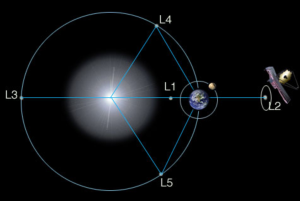
-
Enhanced Capabilities of the James Webb Space Telescope
The James Webb Space Telescope, primarily observes infrared light. This capability allows JWST to look far back in time. But, it’s not just about observing distant objects. JWST can also see through dusty clouds where stars and planets are being born because these clouds block visible light but not infrared, allowing JWST to see what’s happening inside. It can reveal details that other telescopes might miss.
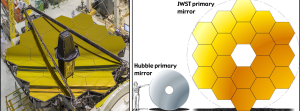

Now, let’s see what plans our buddy, the JWST, has in store for the upcoming years. JWST’s future plans can be grouped as follows:
- Solar system oriented Missions
- Intergalactic Missions
SOLAR SYSTEM ORIENTED MISSIONS OF THE JAMES WEBB SPACE TELESCOPE
-
JUPITER’S GREAT RED SPOT (LATE 2024)
The James Webb Space Telescope is gearing up to check out Jupiter’s famous Great Red Spot, and it’s going to give us loads of cool details about this massive storm. With its infrared gadgets, Webb will peek through Jupiter’s thick clouds and see what’s going on deep inside the storm. It’s like getting a super-close look at all the swirling winds and crazy patterns inside. Not only will the JWST take pretty pictures, but it will also be analyzing the chemicals in the Great Red Spot’s atmosphere, kind of like reading its fingerprint.
This will tell us a lot about where the storm came from and how it’s been hanging around for so long. And get this: The JWST is also going to map out the shape of the Great Red Spot in 3D, from the fluffy clouds up top to the storm’s core down below. This will help us understand how the storm forms and sticks around for centuries. So basically, Webb is going to be like a detective, solving the mysteries of Jupiter’s big storm and teaching us a lot about how planets like Jupiter work. Cool, right?
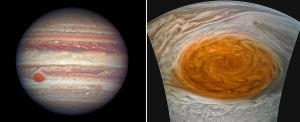
-
TITAN’S ATMOSPHERE (MID-2025)
In 2025, NASA’s James Webb Space Telescope aims to explore Titan, Saturn’s largest moon, by studying its thick atmosphere. Titan’s atmosphere is filled with nitrogen and methane, and Webb will use advanced technology to map both its surface and atmosphere. By doing this, scientists hope to understand the chemistry happening on Titan. Webb’s main goal is to figure out where Titan’s methane comes from. Unlike Earth, it’s not clear if Titan’s methane comes from living things.
Webb will look at how much methane is in Titan’s atmosphere to see if it comes from things like volcanoes or other unknown sources. Also, Webb will study how Titan’s atmosphere changes with the seasons, similar to Earth. By watching these changes, scientists want to learn more about Titan’s climate and weather patterns. Webb’s observations might give us clues about whether Titan could support life or not. Even though it’s very cold and doesn’t have liquid water, the scientists are curious whether Titan could harbor unusual forms of life due to its unique chemistry.
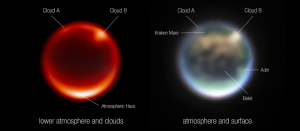
-
ANALYSIS OF GAS PLUMES FROM SATURN’S MOON ENCELADUS & THE DYNAMICS OF URANUS’ RINGS
In addition to all these deep space missions, let’s zoom in on some fascinating missions that will be happening closer to home within our solar system.
Let me tell you something interesting about Saturn’s moon Enceladus, It is covered with ice and hides a secret ocean beneath its surface. But it doesn’t just stay there; it shoots water vapor and ice particles as well as molecules such as carbon dioxide and methane like a fountain. These fountains are called gas plumes and represent the hidden world of Enceladus. Scientists are excited to study them because they could tell us whether Enceladus has the right conditions for life.
Now, let’s talk about Uranus. Did you know that it also wears a ring? They are not as shiny as Saturn’s ring, but they’re present. These rings are roaming around Uranus. Scientists are curious about how they play with each other and with Uranus itself. Studying these rings will provide clues about Uranus’ formation. With the James Webb Space Telescope joining the team, scientists will have a front-row seat to observe these rings in action, helping to uncover even more secrets about Uranus and its mysterious gemstones.

INTERGALACTIC MISSIONS OF THE JAMES WEBB SPACE TELESCOPE
-
EXOPLANET TRANSITS
Watching exoplanets glide in front of nearby stars is a big deal for scientists studying exoplanet atmospheres. When an exoplanet gets between the James Webb Space Telescope (JWST) and its parent star, it’s like a mini eclipse, in which the star’s light fades slightly. And guess what? The scientist is using the JWST to zoom in on this dimming process. Trying to find out what exists in the atmospheres of exoplanets- Is there water vapor? Methane?
Maybe even oxygen, which could mean there’s life out there! And understand this: JWST will continue to monitor exoplanets along the way until 2025. Studying the atmosphere of these distant worlds is like peering into space through a special window. By figuring out what these atmospheres are made of and how they work, scientists are piecing together the puzzle of planet formation and change over time. And hey! With the JWST’s observations, we’re getting closer to answering that age-old question: Are we alone in the universe?

-
SMACS 0723 GALAXY CLUSTER (Early 2025)
In early 2025, scientists are getting ready to dive deep into the mysteries of the universe by checking out this galaxy cluster called SMACS 0723. But they’re not just using any old telescope; they’re using the JWST with this cool trick called gravitational lensing. Basically, gravitational lensing is like nature’s magnifying glass. Imagine distant galaxies hiding behind big galaxy clusters. When light from such a galaxy comes near these clusters, their path bends because of the cluster’s gravity. It’s like how light bends when it goes through a lens. And SMACS 0723 is like the superstar of galaxy clusters because it’s already given us some seriously awesome infrared images of the early universe.
These images are like time machines, showing us what the cosmos looked like way back when galaxies were just starting to form and do their thing. By studying these ancient galaxies, scientists hope to solve the mystery of how galaxies evolved over billions of years. So, the telescope will scan the SMACS 0723 and resolve the collected light to learn all kinds of intriguing details about the cluster and galaxies. It’s kind of like detective work, but with galaxies instead of suspects. This whole mission is going to be a huge deal. It’s pushing the boundaries of what we know about the universe and brings us closer to understanding its origins.
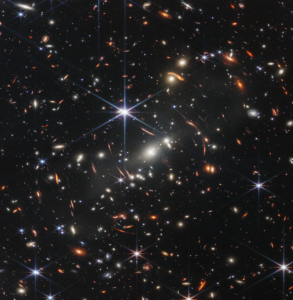
So, are you ready to join the James Webb Space Telescope on this cosmic adventure? Buckle up, because this is one ride you won’t want to miss!
Looking for a stargazing opportunity? Join us for a night under the stars at our upcoming events. Want to see what’s coming up?
Click here to find out.
Liked reading this? You might also like:
- James Webb Space Telescope Brings Stargazing in HD: 12 Spectacular Views of the Universe
- James Webb Vs Hubble: An Astonishing Image Comparison
- The 101 to the amazing James Webb Space Telescope


